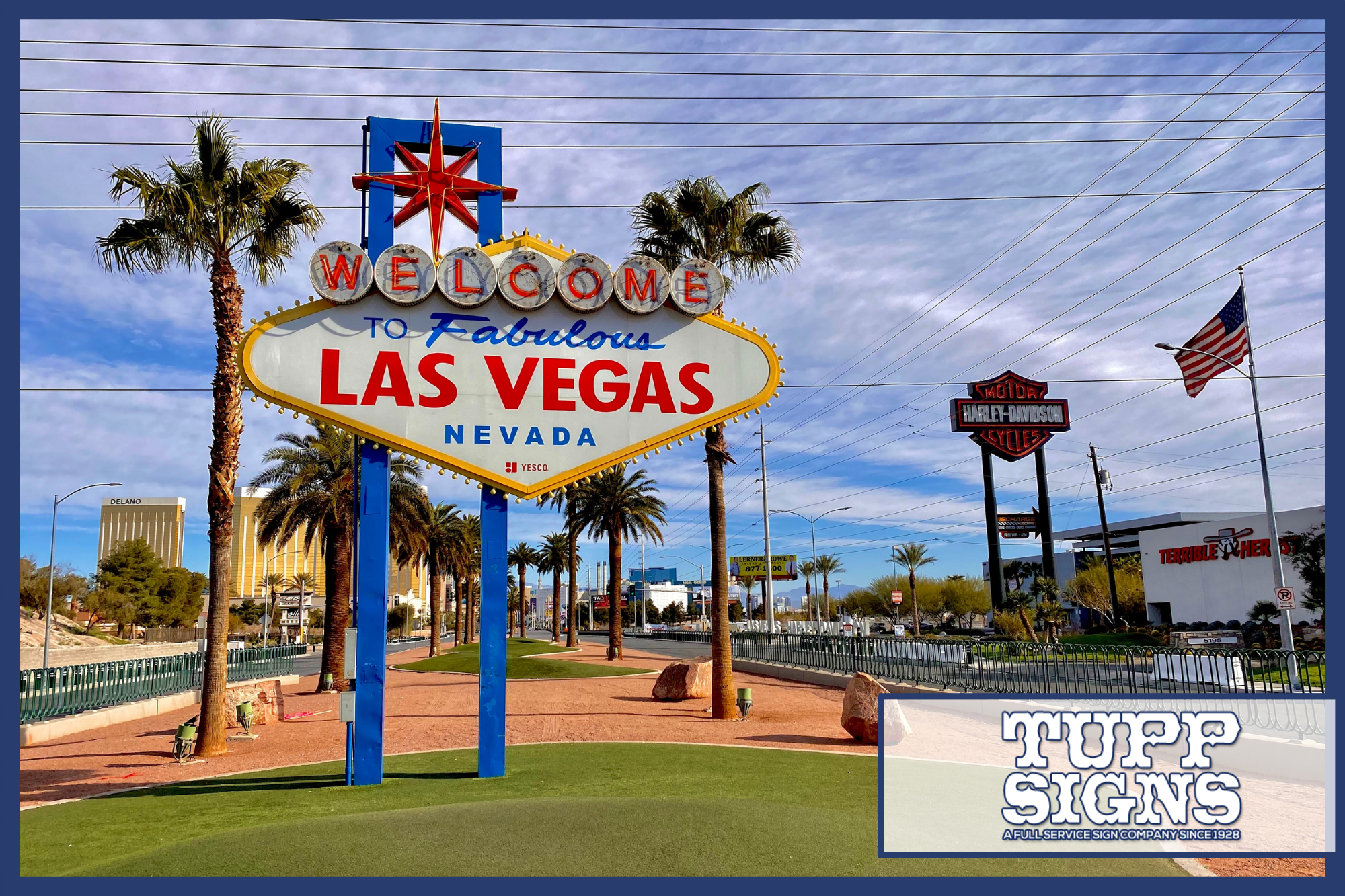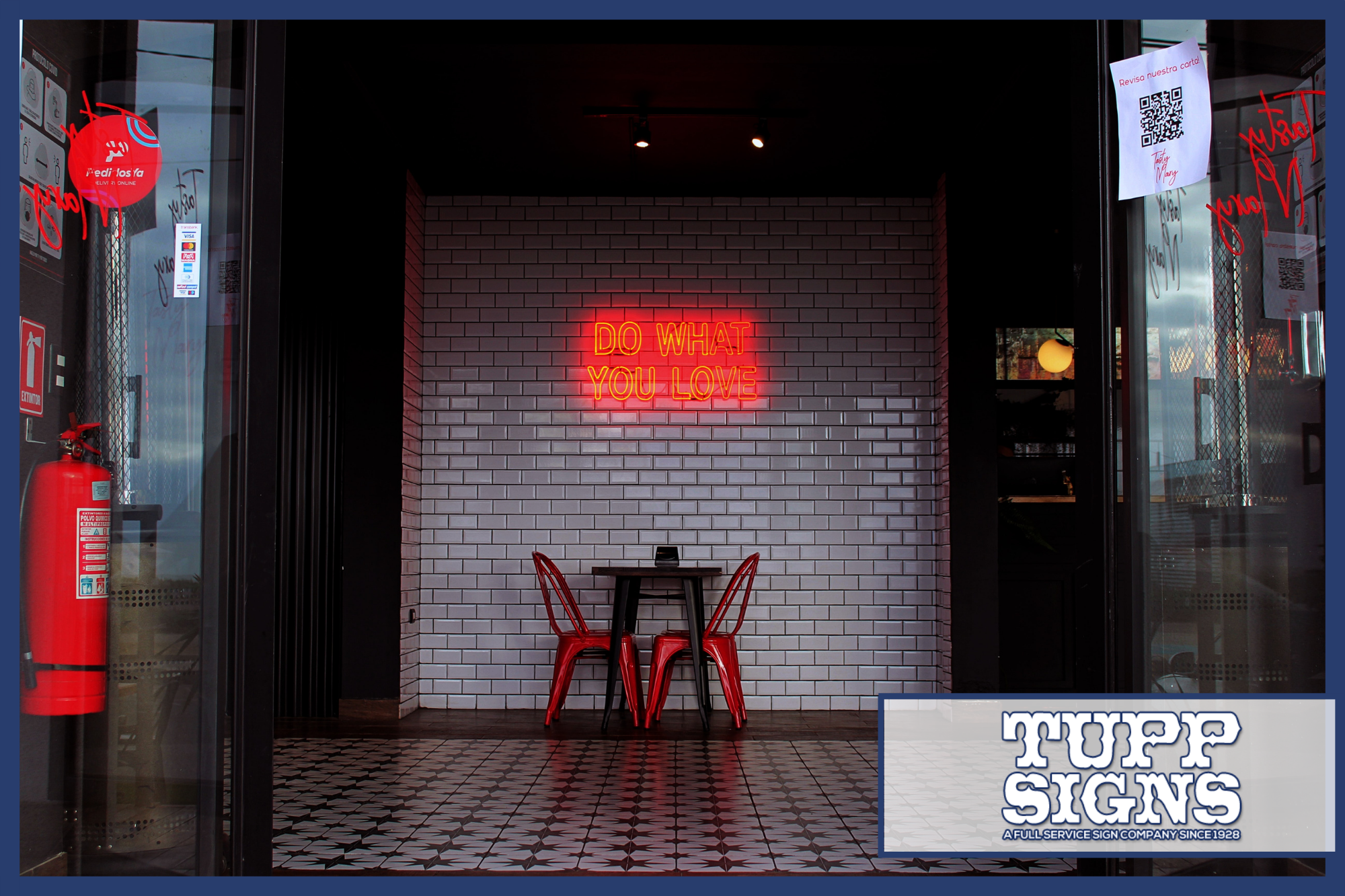Most business owners are aware that, without signage, no one would know your business even exists. Signs are integral to advertising. The bright lights and letters outside will attract customers, bringing them through your door. Meanwhile, indoor signage is telling your visitors more about who you are, what your brand is about, and how to seek out items in your store. In other words, business owners who use signage appropriately will see more business—and see better results overall. But, even though indoor and outdoor signage are available, which one is more important to your marketing strategy? Which one should you invest more money and energy in?
We gathered up some things to consider about outdoor and indoor signage, so you can make the right choices. Let’s have a look.
Think About Your Goals
As with most quandaries where you have to decide one over the other, the main consideration is your goals. In terms of business signage and marketing, this means thinking about who you are trying to reach. Are you trying to capture the attention of people who have never set foot in your store before? Or are you trying to get visitors to buy a specific product? Do you want to appeal to the community or just those who are already loyal to your business?
Depending on your answers, you may need one type of signage more than the other.
Outdoor Signage Attracts Customers
What kind of message does an outdoor sign present? Since these signs are found outside, they are made of durable materials and interesting images or designs to get eyes focused on them. Outdoor signage comes in all kinds of shapes, sizes, colors, and materials these days, but they all have the same goals:
- Attracting customers. Outdoor signs are a source of your customers’ first impression of your business. People will notice the sign before they notice anything else about your physical store, so having high-quality outdoor signage is key to getting people through the front door.
- Reaching more passerby than indoor signs. If you are trying to reach a broader audience, then you need outdoor signage. Well-designed and well-placed signage will attract people from every demographic, as long as they need or want what you are advertising.
Aside from excelling at the critical job of grabbing people’s attention, outdoor signage is also cost-effective. The Outdoor Advertising Association of America (OAAA) stated that advertising outdoors is less costly than newspapers, television, and radio ads. Additionally, great signage lasts much longer than advertising campaigns.
Indoor Signage Informs Customers
Found within your establishment, indoor signage is less about signaling to potential customers and more about providing information. You can use indoor signs for:
- Promoting sales
- Guiding customers throughout the space
- Direct people to points, such as event registration
- Highlight upcoming or brand new services and products
- Persuade people to make a purchase
- Provide additional information about the features on a product or benefits of a product
Since indoor signage is meant for educating and informing, it is the perfect tool for marketing to a targeted audience. Hanging up signage inside your establishment is going to provide brand consistency and visibility. Since people will be seeing a cohesive display of your brand, they will start to understand your brand better—and will trust it even more.
Hanging your indoor signage strategically throughout the store will also increase foot traffic. You can guide people to touch-points or promotions, for example. If you decide to put up digital displays, you can even enhance the shopping experience and decrease perceived wait times.
ADA Compliance
In order to effectively use your signage—both indoor and outdoor—you need to be compliant with ADA regulations. Signs within and outside your business will need to indicate permanent places within the building, such as exits, restrooms, and rooms storing dangerous materials. Depending on your industry, the number of ADA-compliant signs you need will differ. For example, with directional indoor signs, you will need a tactile version that is mounted at a specific height on the wall.
Outdoor sign regulations are a little different. There are fewer things you have to worry about. However, you do need to clearly mark handicapped parking places with the universal pictogram. As you can see, both forms of signage are important when it comes to keeping people safe and making your business more accessible, inside and out.
Outdoor Signage vs Indoor Signage: Which is Right For You?
Now that you know that the location of signs changes their purpose, you should be able to side which signage to invest in. If you want to appeal to customers already within your establishment, then you should put more weight on your indoor signage. Use indoor signs to capture their interest and lead them to the right services. Conversely, if you want to get more customers and appeal to the local community, then your outdoor signage should be your top priority. Outdoor signage is the beginning of brand consistency and will generate interest in your location.
Yet, both types of signage are useful, no matter your business. You will need to use both correctly to maximize the overall effect of business signage.
When it comes to having a clear message, nothing but the highest quality signage is going to work. Do not hang up substandard outdoor or indoor signage and hope for the best. Get the best by calling up Tupp Signs today. Our passionate and skilled team knows how to make outdoor and indoor signage that outshines all other local sign companies.



